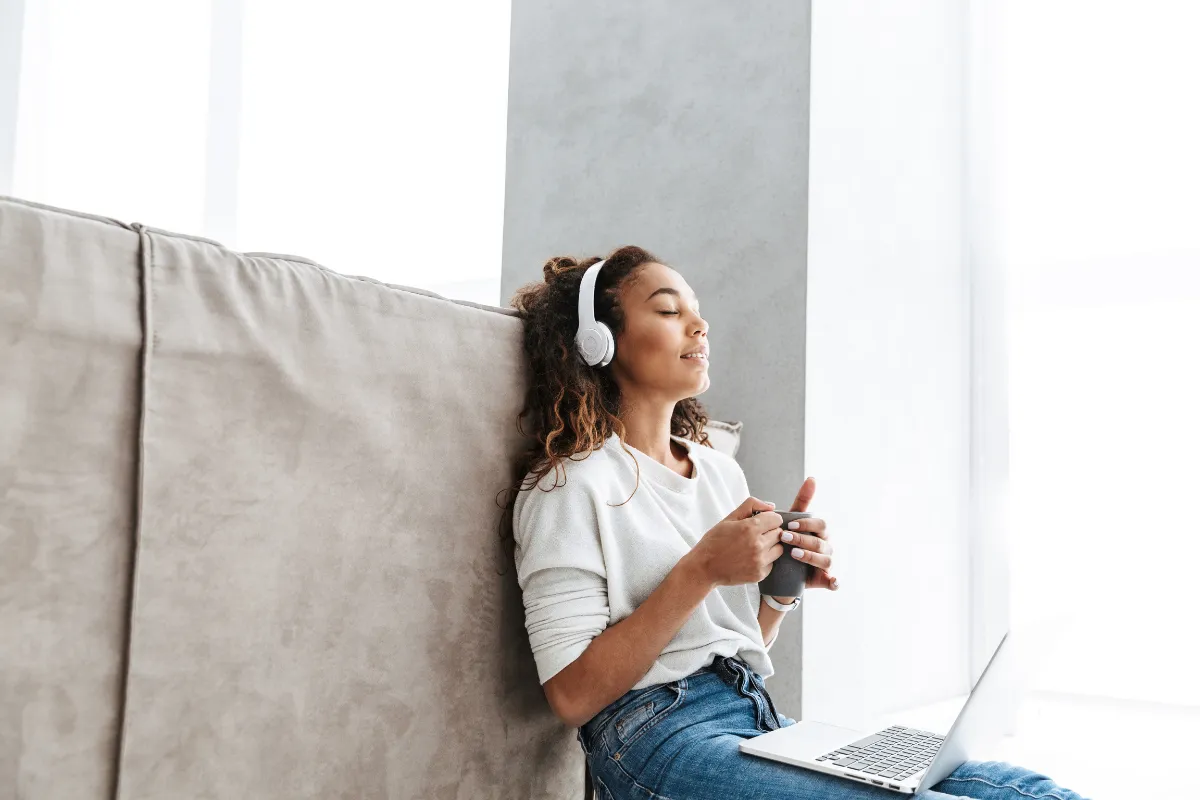In today’s fast-paced world, distractions abound, making it challenging to maintain focus and productivity, especially during study or work sessions. Fortunately, headsets offer a powerful solution by providing a barrier between you and external disturbances. In this guide, we’ll explore ten tips for using headsets effectively to block distractions, allowing you to transition from noise to focus and optimize your concentration for enhanced productivity.

1. Choose Noise-Canceling Headsets: Silence Surroundings
Invest in noise-canceling headsets designed to block out external sounds and create a cocoon of silence around you. These headsets use advanced technology to detect and neutralize ambient noise, allowing you to focus on your tasks without distractions.
2. Select Over-Ear Headsets: Seal in Sound
Opt for over-ear headsets that provide superior noise isolation by fully enclosing your ears. This design helps seal in sound and prevents external noises from penetrating, ensuring a distraction-free environment conducive to concentration.
3. Adjust Volume Appropriately: Find the Sweet Spot
Adjust the volume of your headset to a comfortable level that effectively masks background noise without causing discomfort or auditory fatigue. Experiment with different volume settings to find the sweet spot that optimizes focus and concentration.
4. Play White Noise or Nature Sounds: Mask Distractions
Use your headset to play white noise or nature sounds that mask distractions and promote focus. Choose soothing sounds such as rainfall, ocean waves, or gentle wind to create a calming atmosphere that enhances concentration.
5. Listen to Instrumental Music: Enhance Productivity
Opt for instrumental music with minimal lyrics to enhance productivity and minimize distractions. Classical music, ambient electronic, or instrumental jazz are excellent choices that provide a pleasant background without diverting your attention.
6. Create a Dedicated Workspace: Establish Boundaries
Designate a dedicated study or work space where you can use your headset to block distractions effectively. Minimize clutter, set up comfortable seating, and eliminate potential sources of interruption to create an environment optimized for focus.
7. Use Earbuds for Portability: Stay Mobile
Choose earbud-style headsets for portable, on-the-go distraction blocking. These compact devices provide effective noise isolation while allowing you to move freely and maintain focus wherever you go, whether it’s in a coffee shop, library, or public transport.
8. Practice Deep Breathing: Center Your Mind
Combine your headset with deep breathing exercises to center your mind and enhance focus. Take slow, deep breaths while wearing your headset, focusing on the rhythm of your breathing to calm your mind and drown out distractions.
9. Take Regular Breaks: Refresh and Recharge
Schedule regular breaks during study or work sessions to refresh and recharge your mind. Remove your headset, stretch, and take a short walk to clear your head and prevent mental fatigue, returning to your tasks with renewed focus and energy.
10. Experiment with Meditation: Cultivate Inner Quiet
Incorporate meditation practices into your routine to cultivate inner quiet and strengthen your ability to block distractions. Use guided meditation apps or mindfulness exercises while wearing your headset to promote relaxation and sharpen your focus.
By implementing these ten tips for using headsets to block distractions, you can transform noisy environments into havens of focus and productivity. Whether you’re studying, working, or engaging in creative endeavors, a quality headset serves as your shield against external disturbances, allowing you to immerse yourself fully in the task at hand and achieve your goals with clarity and efficiency.
FAQs:
Q1: How do noise-canceling headsets work?
A1: Noise-canceling headsets use built-in microphones to detect ambient sounds, then generate sound waves that cancel out these external noises, effectively blocking distractions and creating a quieter environment for the wearer.
Q2: Can listening to music help block distractions?
A2: Yes, listening to instrumental music or white noise can help mask distractions and enhance focus during study or work sessions. Choose music with minimal lyrics and calming melodies to create a conducive environment for concentration.
Q3: Are earbuds effective for blocking distractions?
A3: Earbuds can be effective for blocking distractions, especially when paired with noise-canceling technology or played at a moderate volume. However, over-ear headsets typically provide better noise isolation and are more effective in noisy environments.
Q4: How often should I take breaks during study or work sessions?
A4: It’s recommended to take short breaks every 25-30 minutes to rest and recharge your mind during study or work sessions. Use breaks to stretch, hydrate, and refocus before returning to your tasks feeling refreshed and ready to concentrate.
Q5: Can meditation help improve focus and concentration?
A5: Yes, meditation practices such as deep breathing and mindfulness can help improve focus and concentration by calming the mind and reducing mental chatter. Incorporate meditation into your routine while wearing your headset to enhance your ability to block distractions and stay focused on your tasks

